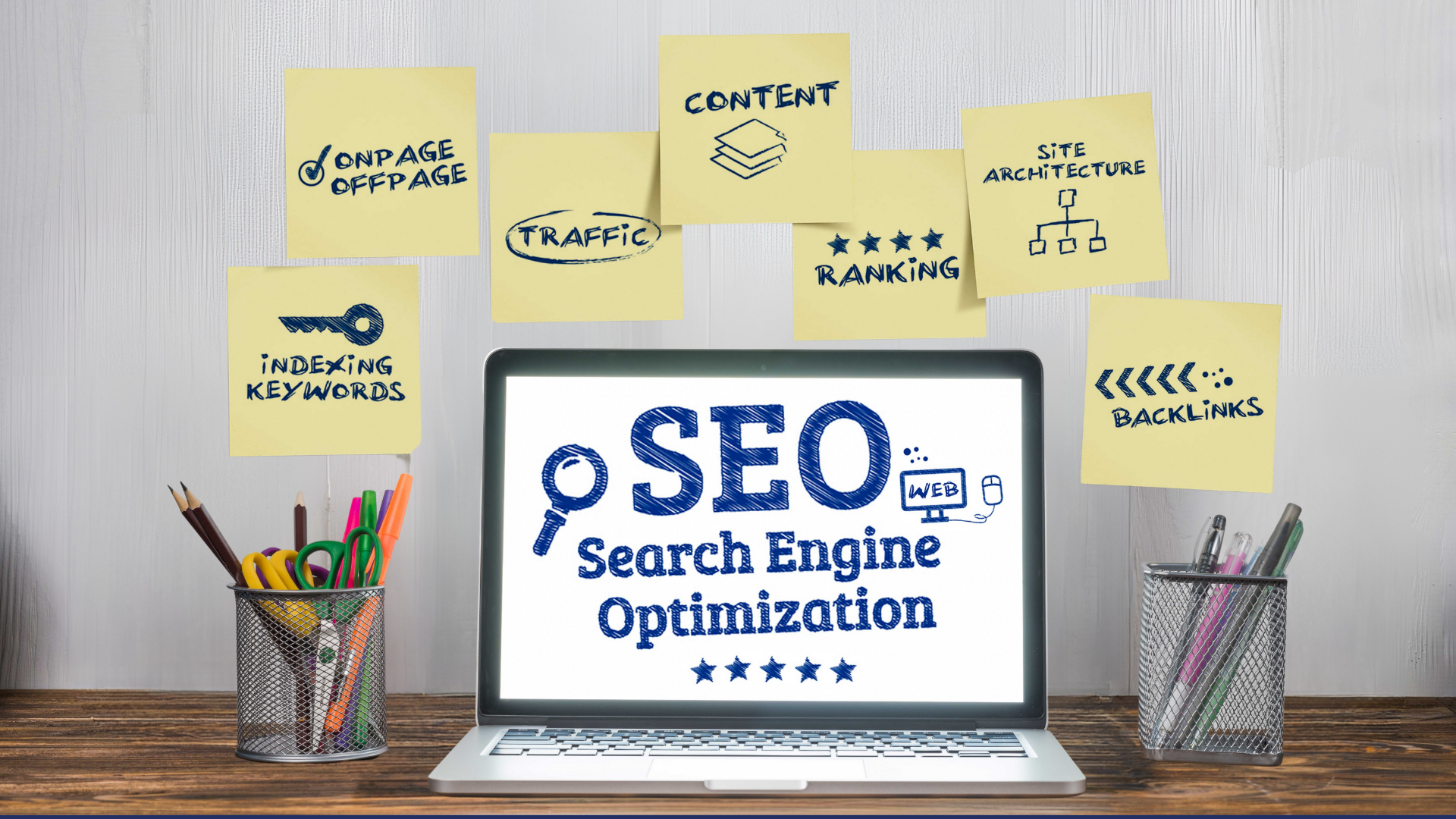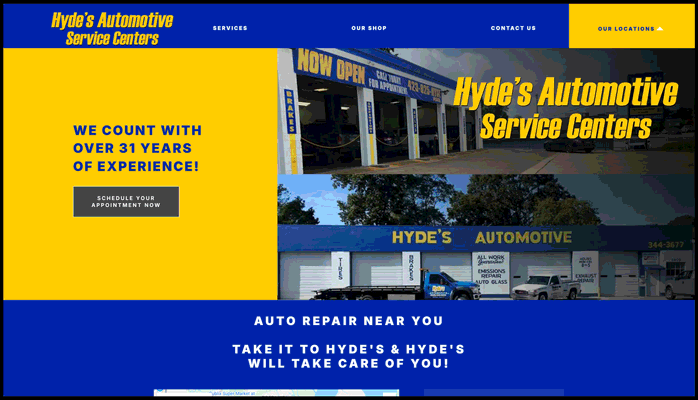Do you know exactly what you are looking at after you’ve conducted a search on Google? Do you know the source of what you are seeing? For most auto repair shop owners the answer to those two questions is “No” even though they might think it is “Yes.” This is the first blog in a series dedicated to helping auto repair shop owners understand Google’s Search Engine Results Page (SERP) and more importantly, how they can optimize their most important digital assets to help increase their chances of showing up toward the top when somebody in their town or city is searching for the services they provide. I encourage you to read on even if you think you know what you are seeing on the SERP.
Google Search
Google dominates online search in the United States. Right around 90% of all searches for information and services happen on Google. If you’ve been around long enough, you probably remember the time when the SERP was really simple. You would conduct a search and see the top 10 results on the first page, all of which represented websites. Since then the SERP has gotten much more complicated. And unfortunately, marketing agencies and other businesses have taken advantage of the complexity to further confuse small businesses by misrepresenting what appears on the SERP and how to influence it. We’ve written this blog to cut through the myths and misinformation and provide you with specific and direct knowledge and guidance.
Local Search
For our purposes it’s important to know that Google has multiple algorithms. We are focused on Local Search, which is the algorithm that is used when somebody searches for local services like auto repair and maintenance. There are many factors to consider for this type of search. For the purpose of this blog we will cover three of the most important.
Local search is different than Google’s main algorithm.
This helps you, a lot. Local search enables you to compete against only the other businesses providing auto repair services in your area instead of across the United States or the globe. This means that you only have to beat out other local auto repair businesses, not every auto repair business. It also means that if you are doing research on Search Engine Optimization (SEO), you need to be sure you are looking at guidance on local search and not global search. The biggest issue we see with this is when a marketing agency convinces an auto repair shop owner that they need to spend really big to get the best results and they end up with a $500 solution to a $50 problem. You are not competing to win the Olympics. You are competing in the local 5k.
What works in one area may not work in another.
We work with shops across the country and in all 50 states and we can definitely give testimony to this. It would be great if the same specific SEO approach worked for every local business but that’s just not the way it goes. In some locations, Google is trying to recognize the uniqueness of the area. Some places, like Los Angeles, make it really hard to compete because of how big they are and because they have neighborhoods that most people consider cities. Plus, Google is always testing different factors and functionality on the SERP and it’s difficult to know if they are doing it in your area unless you are constantly monitoring search results and comparing what you see to other cities and towns.
Search is personalized by user.
Google’s stated goal is to make each individual’s search turn up their most desired results. This means that Google does factor the user’s previous activities into the results that they see. As an example, if you’ve shown extra interest in Chipotle (visited the website, maybe made an order, checked out the menu) and you search for something related to food or lunch, Google is more likely to show the Chipotle website in your organic search results. You’ve probably noticed the same thing happening on Amazon, Facebook, etc. The key thing to know here is that you can do everything right to optimize your website to be found and still lose out because a potential customer has already visited a competitor’s website or Google Business Profile.
Auto Repair SERP
With that important background information covered, let’s take a look at what we see on a SERP after a search for auto repair and go through the different elements. 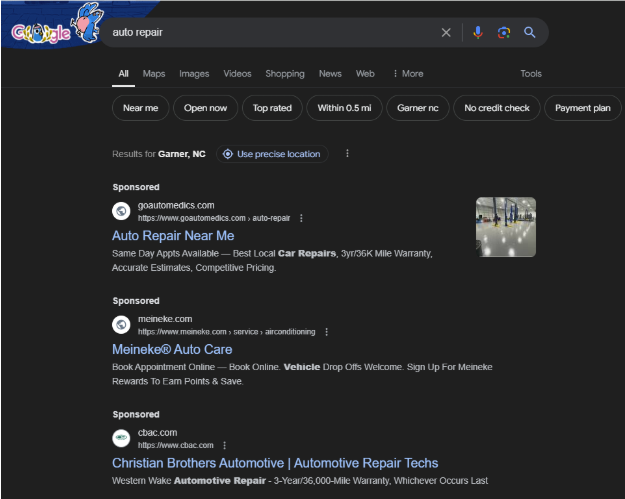
Local Pack and Map
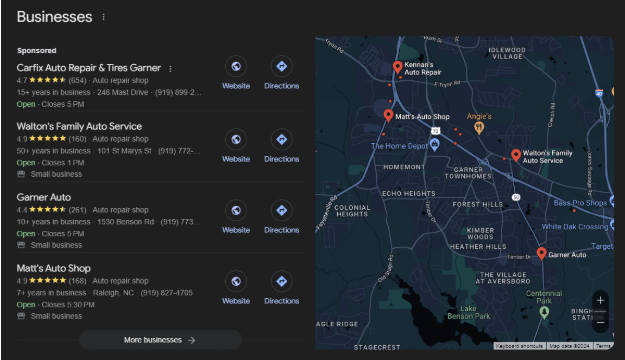
The two most important things to know about the Local Pack and Maps:
- Results are driven by your Google Business Profile not your website.
- How close you are to the person conducting the search is one of the most important factors in where you will show up on the list.
We will do a deeper dive blog at a later date on how to optimize your Google Business Profile to increase your opportunities to be found and how to leverage reviews to increase the likelihood of your shop being chosen when it shows up in the Local Pack and Maps.
Organic Search
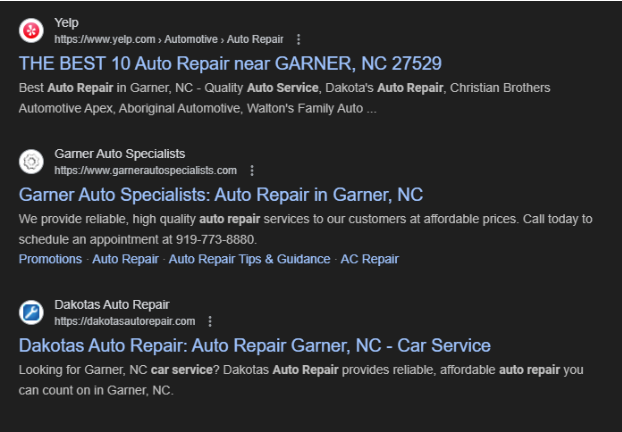
Content
You may have heard the saying that “Content is King.” That is true when it comes to optimizing your website to show up toward the top of Google’s organic search results. The important thing here is that Google has made a transition from being focused on keywords to being a question answering machine. What that means for you is that you want to have content on your website that answers the questions people in your community are asking related to the services you provide. Do that well and you will climb above your competition. And remember, you don’t have to be better than every shop in the world, you just have to better than the other shops in your community.
Links or Backlinks
Links to your website are the digital version of word of mouth. Google crawls the internet and when they come across links from the websites of other organizations, associations and businesses in your community to your website, Google takes those as endorsements for your business and your website. This helps your search rankings. Excellent sources of local links include Chambers of Commerce, local associations that you might sponsor or serve, youth sports organizations, and other local businesses that you might partner with. Simply ask them if they would be willing to post a link to your website on their website. And you can always return the favor. This is an area where even a small number of strong local links can make a big difference. So if you haven’t started yet, get started as soon as possible.
Architecture
As I mentioned above, this used to be the most important element. Now, most architecture-related pieces are table stakes that are just part of the foundation of SEO. You can’t really gain an advantage here but you can lose if you don’t have the basics covered. Most website building platforms have all the key pieces built into the system. Just make sure you don’t skip steps.
The two most important things to know about organic search:
- Results are driven by your website.
- The two broad elements that impact your rankings more than anything else are the content on your website (answering the questions people are asking) and local links (links from other websites in your community to your website).
Wrapping up the SERP
There may be several other elements on the SERP that you will see when searching with auto repair-related keywords. But for auto repair shops, organic search, the Local Pack and ads are where all the customers come from, in that order. By understanding how Google chooses what businesses to show in the different areas of the SERP, you can make informed decisions on how to optimize your digital assets to increase your chances of climbing the ranks. Look for future blogs on how to specifically optimize your Google Business Profile for the Local Pack and maps, and your website for organic search. If you have any questions about the SERP, or if we can help in any way, please contact us at 866-655-1605.
